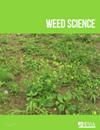Bromus spp.对除草剂的耐药性:全球综述
IF 2.1
2区 农林科学
Q2 AGRONOMY
引用次数: 0
摘要
本文综述了目前世界范围内溴甲烷属植物的抗除草剂情况。为进一步了解不同物种的抗性进化和扩散提供了更多的生物学和遗传学信息。已证实的除草剂抗性案例是凤梨(Bromus catharticus)。;海葵;同:总状帚帚帚、黄花帚帚、黄花帚帚;同义:凤梨,凤梨,凤梨;同义:Bromus diandrus Roth ssp。diandrus, Bromus rubens L., Bromus secalinus L., Bromus sterilis L.和Bromus tectorum L.在11个国家。溴甲烷种群对六种除草剂作用位点具有交叉抗性和多重抗性:乙酰辅酶A羧化酶、乙酰乳酸合成酶、光系统II、长链脂肪酸、5-烯醇丙酮酰基shikimate-3-磷酸合成酶和4-羟基苯基丙酮酸双加氧酶抑制剂。抗性机制因靶点到非靶点或两者的结合而异。溴化物通常是高度自花授粉的,但在某些物种中可以发生低水平的异交。凤梨属植物的倍性不同,从二倍体(2n = 2x = 14)到十二倍体(2n = 12x = 84)不等。雀稗的抗除草剂性是一个全球性的问题,抗除草剂等位基因的传播主要通过种子介导的基因流进行。然而,通过花粉介导的基因流转移除草剂抗性等位基因是可能的。本文章由计算机程序翻译,如有差异,请以英文原文为准。
Herbicide resistance in Bromus spp.: a global review
This review summarizes what is currently known about herbicide resistance in Bromus spp. worldwide. Additional information on the biology and genetics of Bromus spp. is provided to further the understanding of resistance evolution and dispersal of the different species. Cases of herbicide resistance have been confirmed in Bromus catharticus Vahl., Bromus commutatus Schrad.; syn. Bromus racemosus L., Bromus diandrus Roth, Bromus japonicus Thunb.; syn. Bromus arvensis L., Bromus madritensis L., Bromus rigidus Roth; syn. Bromus diandrus Roth ssp. diandrus, Bromus rubens L., Bromus secalinus L., Bromus sterilis L., and Bromus tectorum L. in 11 countries. Bromus spp. populations have evolved cross and multiple-resistance to six herbicide sites of action: acetyl-coenzyme A carboxylase, acetolactate synthase, photosystem II, very long-chain fatty acid, 5-enolpyruvylshikimate-3-phosphate synthase, and 4-hydroxyphenylpyruvate dioxygenase inhibitors. Resistance mechanisms varied from target-site to non-target-site or a combination of both. Bromus spp. are generally highly self-pollinated, but outcrossing can occur at low levels in some species. Bromus spp. have different ploidy levels, ranging from diploid (2n = 2x = 14) to duodecaploid (2n = 12x = 84). Herbicide resistance in Bromus spp. is a global issue, and the spread of herbicide resistance alleles primarily occurs via seed-mediated gene flow. However, the transfer of herbicide resistance alleles via pollen-mediated gene flow is possible.
求助全文
通过发布文献求助,成功后即可免费获取论文全文。
去求助
来源期刊

Weed Science
农林科学-农艺学
CiteScore
4.60
自引率
12.00%
发文量
64
审稿时长
12-24 weeks
期刊介绍:
Weed Science publishes original research and scholarship in the form of peer-reviewed articles focused on fundamental research directly related to all aspects of weed science in agricultural systems. Topics for Weed Science include:
- the biology and ecology of weeds in agricultural, forestry, aquatic, turf, recreational, rights-of-way and other settings, genetics of weeds
- herbicide resistance, chemistry, biochemistry, physiology and molecular action of herbicides and plant growth regulators used to manage undesirable vegetation
- ecology of cropping and other agricultural systems as they relate to weed management
- biological and ecological aspects of weed control tools including biological agents, and herbicide resistant crops
- effect of weed management on soil, air and water.
 求助内容:
求助内容: 应助结果提醒方式:
应助结果提醒方式:


